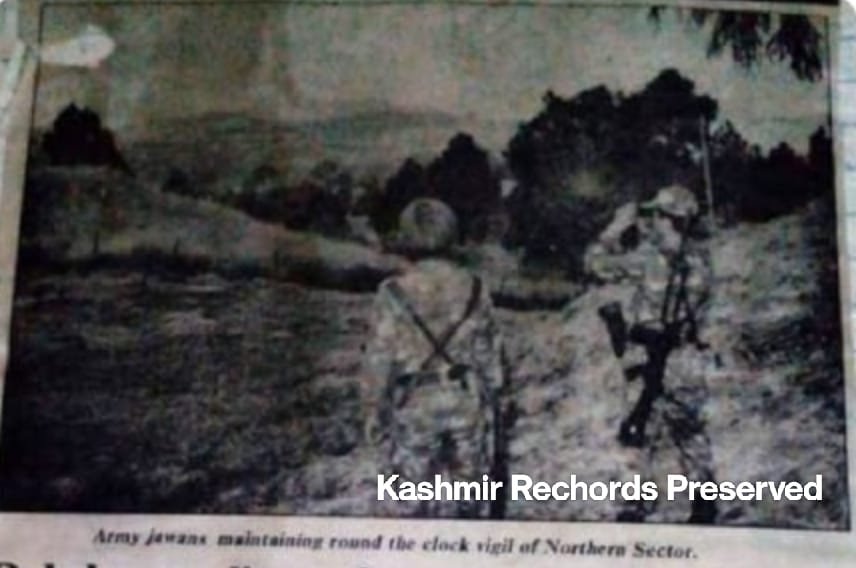(Kashmir Rechords Report)
The recent escalation, particularly along the Line of Control (LoC) following Operation Sindoor—launched in retaliation to the brutal killing of 26 innocent Tourists by Pakistan-trained terrorists in Pahalgam, Kashmir, has once again brought into sharp focus a reality long known to the residents of border areas: The LoC is never truly quiet.
While national attention tends to spike during major incidents, for the civilians and security personnel along the frontier, such violence is, somehow, a part of daily life. Ceasefire or not, Pakistan has consistently kept the LoC “alive” through calibrated military provocations, infiltration attempts and cross-border shelling.
A Pattern of Violations Since the 1990s
The 1990s marked a turning point in the nature of Indo-Pak tensions along the LoC. As Pakistan escalated its proxy war in Jammu and Kashmir, it adopted a dual strategy—supporting cross-border terrorism while using its regular forces to violate ceasefires and provoke Indian responses.

An archival news report dated January 23, 1991, preserved by Kashmir Rechords, provides evidence of this long-standing pattern. It refers to heavy Pakistani shelling in sensitive areas like Jhanghar, even as early as 1987–1988. Hundreds of bullets, shells and mortars were fired, prompting appropriate retaliation from Indian forces. Jhanghar, surrounded on three sides by Pakistani territory—with Kotli and Mirpur on the other side of the LoC in Pakistan Occupied Kashmir (PoK)—has remained a strategically critical and vulnerable target.
This report underscores that as early as the Zia-ul-Haq era, Pakistan was using cross-border firing as a cover for infiltrating militants. The 1987–1997 period saw routine use of this tactic, which would later become a hallmark of Pakistan’s approach to Jammu and Kashmir.
Why Pakistan Keeps the LoC Alive?
Pakistan’s strategy to keep the LoC active and volatile is not accidental. It is rooted in military utility, political necessity and psychological warfare. Several overlapping motives drive this calculated policy:
1. Cover for Infiltration
Frequent firing creates diversions for Indian security forces, allowing trained terrorists to slip across the LoC. It also masks movement along rugged terrain under the guise of military exchanges.
2. Demoralizing Civilians
Mortar and artillery shelling on villages is designed to spread panic, force displacement and create long-term instability. Yet, the people of these regions have continued to show unparalleled resilience in the face of such adversity.
3. Narrative Management and International Messaging
By keeping the region in a state of tension, Pakistan attempts to portray Kashmir as a disputed and unstable zone, hoping to attract international attention and sympathy.
4. Military Supremacy in Domestic Politics
For the Pakistani establishment—especially the army—a “live” LoC helps sustain its dominant political role. Tensions with India serve as a unifying distraction from domestic instability and economic failures.
5. Sabotaging Peace Initiatives
Historically, whenever backchannel diplomacy or bilateral talks gain traction, a sudden spike in ceasefire violations often follows. This indicates the entrenched opposition to peace within Pakistan’s security apparatus.

Ceasefire in Name, Conflict in Practice
Despite multiple ceasefire agreements, the structural nature of Pakistan’s provocations over the past has remained consistent. Whether it is cross-border shelling, sniper attacks, or coordinated infiltration attempts, Pakistan continues to treat the LoC as an extension of its anti-India strategy.
The recent post-Operation Sindoor violation is not an aberration. It is a continuation of a long, calculated military doctrine that attempts to destabilize Jammu and Kashmir through persistent provocations. Yet, despite the cost and chaos, the people along the LoC stand firm—their courage matching the commitment of the Indian Army to safeguard national security.
Pakistan’s actions, rooted in insecurity and strategic desperation, must be seen for what they are: a refusal to accept peace as an option, and a willingness to use terror and tension as tools of statecraft. The response must be equally firm, clear-eyed and consistent.

